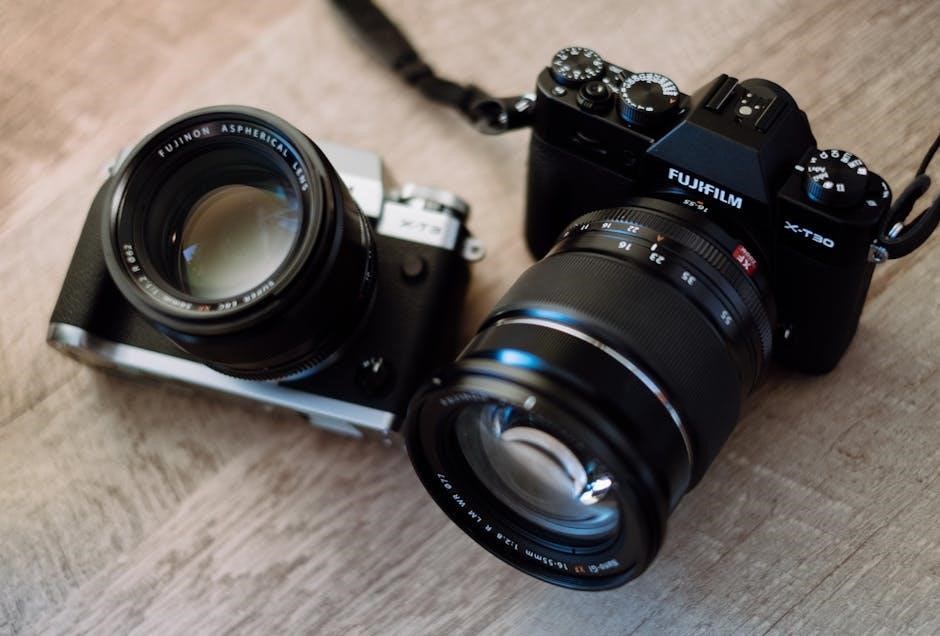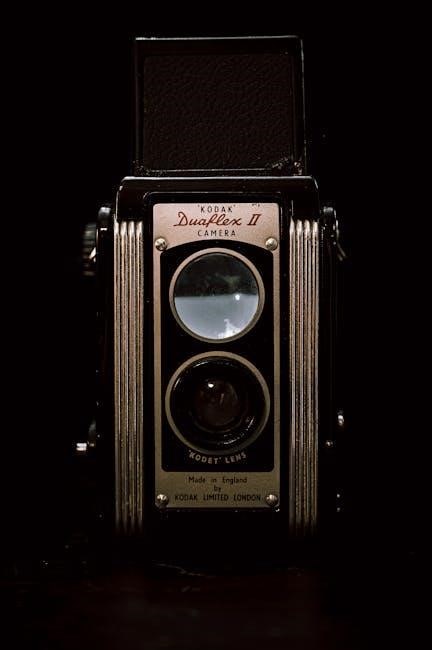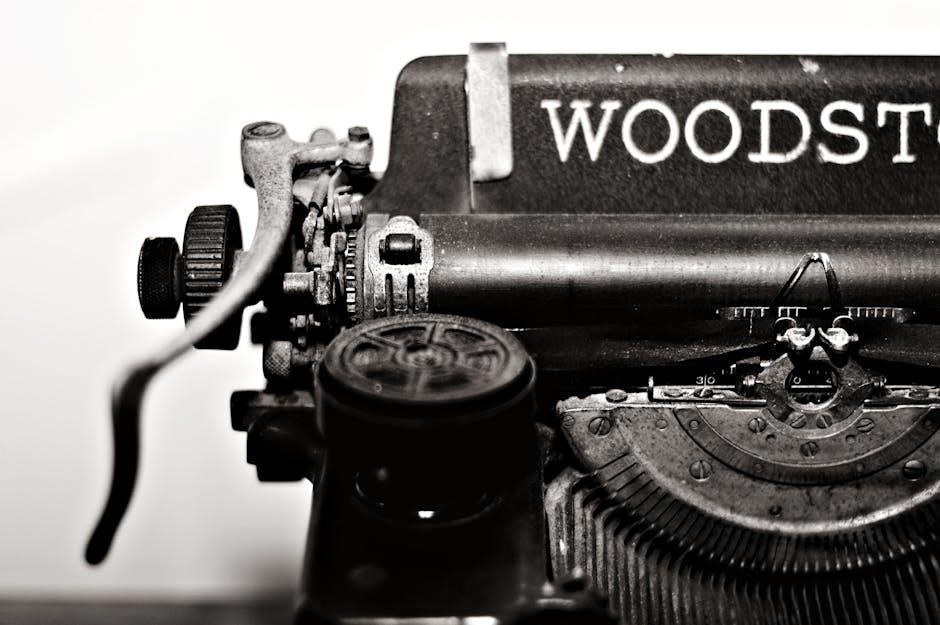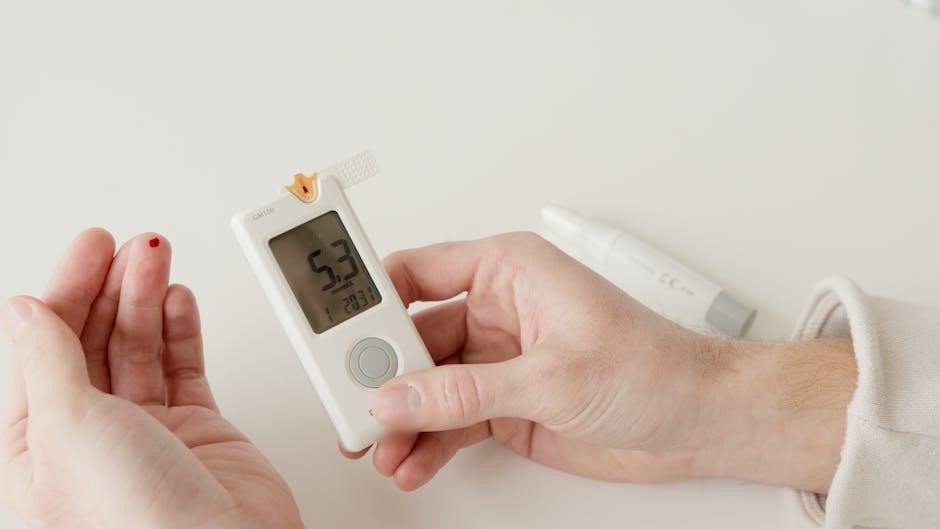A manual propelling device, such as paddles or oars, is essential for safely maneuvering boats or mobility aids when mechanical systems fail. Regular checks ensure readiness and functionality in emergencies.
What is a Manual Propelling Device?
A manual propelling device is equipment that relies on human power to move or maneuver a vessel or mobility aid. Common examples include paddles, oars, or even anchors, which enable control when mechanical systems fail. These devices are essential for safety, particularly in emergencies or calm waters. For boats, they ensure navigation without engine reliance, while for mobility aids like wheelchairs, they provide independence and control. Properly maintained and readily accessible manual propelling devices are critical for efficiency and reliability in various scenarios. Always check their availability, condition, and compatibility to ensure optimal performance when needed.

Importance of Checking Manual Propelling Devices
Checking manual propelling devices is crucial for ensuring safety, reliability, and compliance with regulations. These devices, such as paddles or oars, are often required by law for boats and mobility aids. Regular inspections help identify wear, damage, or issues that could hinder performance. For boats, this ensures readiness in emergencies or calm waters, preventing situations where propulsion failure could lead to accidents. For mobility aids like wheelchairs, proper checks maintain independence and control. Additionally, verifying features like availability, condition, and compatibility ensures they function as intended. Neglecting these checks can result in inefficiency or failure when needed most. Prioritizing inspections guarantees functionality, safety, and peace of mind for users in various scenarios.

Key Features to Check in a Manual Propelling Device
Ensure availability, condition, proper fit, performance, and storage. Check for wear, maintenance needs, maneuverability, safety compliance, and user familiarity to guarantee reliability and functionality in critical situations.

Availability and Readiness
Ensuring the manual propelling device is always available and ready for use is critical. It should be easily accessible and stored in a secure, dry location to prevent damage. Regularly check that the device is within reach and not obstructed by other equipment. For boats, this means ensuring paddles or oars are securely stowed but quickly retrievable. For mobility aids like wheelchairs, verify that the device is properly attached and functioning. In emergency situations, delays in accessing the propelling device can lead to safety risks. Always confirm that the device is in good working condition before heading out. This readiness check ensures reliability when needed most, whether maneuvering a boat or navigating terrain with a mobility aid.

Condition and Wear
Inspecting the condition and wear of a manual propelling device is vital for its effectiveness and longevity. For boats, check paddles or oars for cracks, splintering, or damage that could compromise strength. Ensure all hardware, such as oarlocks and hinges, is secure and functioning smoothly. For mobility aids like manual wheelchairs, examine the wheels, axles, and frame for signs of wear or corrosion. Look for frayed seams or torn upholstery that might affect durability. Addressing wear early prevents sudden failures during use. Regular maintenance, such as lubricating moving parts or replacing worn components, ensures optimal performance. A well-maintained device not only enhances safety but also improves efficiency, making it easier to propel manually when needed.

Proper Fit and Compatibility

Ensuring proper fit and compatibility of a manual propelling device is crucial for optimal performance and safety. For boats, verify that paddles or oars are the correct size and type for your vessel, as mismatched equipment can hinder maneuverability. For mobility aids like manual wheelchairs, the device must fit the user’s body proportions, with adjustable features such as seat height, armrests, and footrests tailored to their needs. Compatibility with the intended use is also essential; for example, a paddle designed for a kayak may not suit a larger boat. Always check that the device is suitable for the user’s weight and intended environment, whether on water or land. Proper fit ensures comfort, reduces the risk of injury, and maximizes efficiency, making the device safer and more effective to use. Testing the device in real-world conditions can help confirm its compatibility and suitability.
Performance and Efficiency
Evaluating the performance and efficiency of a manual propelling device is essential to ensure it operates effectively. For boats, check that paddles or oars move water smoothly without excessive resistance, and their materials are durable enough for the intended use. For mobility aids like wheelchairs, ensure the wheels and axles are in good condition to maintain smooth movement. Proper ergonomics and weight distribution can enhance efficiency, reducing user fatigue. Additionally, verify that the device’s design minimizes drag or friction, allowing for effortless propulsion. Regular testing under typical usage conditions helps identify any performance issues. Ensuring optimal efficiency guarantees reliability and ease of use, making the device more effective for its intended purpose. Always prioritize devices that balance strength, durability, and lightweight design for superior performance.
Storage and Accessibility
Ensuring proper storage and accessibility of your manual propelling device is crucial for its usability and safety. Always store the device in a secure, dry location to prevent damage or deterioration. For boats, paddles or oars should be kept in designated holders or brackets to avoid loss or damage while on the water. For mobility aids like wheelchairs, ensure the device is stored in a way that protects it from environmental factors and remains easily accessible when needed. Regularly check that the storage location is convenient and allows for quick retrieval in emergencies. Additionally, verify that the device is not obstructed by other items, ensuring it can be accessed without delay. Proper storage and accessibility guarantee that the manual propelling device remains reliable and ready for use when required. Always prioritize secure and organized storage to maintain its functionality and availability. This ensures it performs effectively in critical situations.
Maintenance and Upkeep
Maintenance and upkeep are vital to ensure the reliability and longevity of your manual propelling device. Regularly inspect the device for signs of wear and tear, such as cracks, dents, or fraying materials. For paddles or oars, check the integrity of the handle, blade, and any connecting components. Clean the device thoroughly after use to remove dirt, debris, or corrosion-inducing substances. Lubricate moving parts, such as hinges or locks, to maintain smooth operation. For wheelchairs or mobility aids, ensure the wheels, axles, and frames are in good condition and properly aligned. Schedule professional servicing if complex repairs are needed. Neglecting maintenance can lead to malfunctions, compromising safety and usability. Consistent upkeep ensures the device remains in optimal condition, ready for emergencies or daily use. Always follow the manufacturer’s guidelines for specific maintenance requirements. Regular care prevents deterioration and extends the lifespan of your manual propelling device.

Handling and Maneuverability

Handling and maneuverability are critical features to check in a manual propelling device, as they directly impact usability and safety. Ensure the device is lightweight and balanced, allowing for easy control and movement. For paddles or oars, verify that the handles are ergonomically designed to reduce strain during use. In wheelchairs or mobility aids, check the responsiveness of the wheels and frames to ensure smooth navigation over various surfaces. Test the device in different scenarios to assess its agility and stability. Proper handling ensures efficient propulsion and reduces the risk of accidents. For maritime devices, ensure they can maneuver effectively in tight spaces or choppy waters. Regularly inspect the device for any structural issues that might hinder its performance. Optimal handling and maneuverability are essential for both safety and efficiency, making them key features to evaluate. Always prioritize devices that offer ease of control and adaptability to different environments.
Compliance with Safety Regulations
Ensuring your manual propelling device complies with safety regulations is vital for legal and operational safety. Verify that the device meets local and international safety standards, such as those set by maritime or mobility aid authorities. For boats, check if paddles or oars are approved for use in emergencies and adhere to size and material requirements. In mobility aids, ensure wheelchairs or scooters meet accessibility and safety certifications. Familiarize yourself with regulations regarding weight capacity, durability, and visibility features. Always inspect for any certifications or labels that confirm compliance. Non-compliance can lead to legal issues or safety risks. Regular updates on regulatory changes are essential to maintain adherence. Compliance ensures the device functions safely and reliably, protecting both the user and others. Never overlook this critical aspect when selecting or maintaining a manual propelling device. Always prioritize devices that meet or exceed safety standards.
User Knowledge and Familiarity
Understanding how to properly use a manual propelling device is crucial for its effectiveness. Users should familiarize themselves with the device’s operation, including how to deploy, maneuver, and store it. Regular practice ensures readiness in emergencies. It’s important to understand the device’s limitations and optimal conditions for use. Users should also know how to perform basic maintenance and repairs. Familiarity with local regulations and safety guidelines is essential. Never assume knowledge; always verify understanding through practical experience or training. Ensuring users are comfortable and confident with the device enhances safety and efficiency. Proper training and hands-on practice are key to mastering the use of manual propelling devices. This knowledge ensures the device is used correctly and effectively when needed. Always prioritize user education to maximize the device’s benefits and minimize risks. Knowledge and familiarity are as important as the device itself.
Regularly checking manual propelling devices ensures safety, efficiency, and preparedness. Familiarity with their features and proper use is vital for reliable operation in emergencies or everyday activities.
Final Thoughts on Checking Manual Propelling Devices
Regularly inspecting manual propelling devices is crucial for ensuring safety and efficiency in both boating and mobility aids. These devices, such as paddles or oars, are essential for maneuvering when primary systems fail. Neglecting their condition or readiness can lead to safety risks or legal issues, as many regions require their presence on pleasure craft. Proper maintenance, including checking for wear, ensuring compatibility, and verifying accessibility, is vital. Users should also stay informed about compliance with local regulations and understand how to use these devices effectively. By prioritizing these checks, individuals can ensure reliability and preparedness in emergencies. Consistent upkeep not only enhances performance but also contributes to overall safety, making manual propelling devices a dependable fallback in critical situations.

Encouragement to Prioritize Safety
Prioritizing safety when using manual propelling devices is paramount to ensure reliability in emergencies. These devices, such as paddles or oars, serve as critical backups when primary propulsion systems fail. Regular inspections and maintenance are essential to prevent malfunctions and ensure readiness. Neglecting these checks can lead to safety risks or legal consequences, as many regions mandate their presence on pleasure craft. Users must understand local regulations and proper usage techniques to maximize effectiveness. By taking proactive steps to verify the condition, compatibility, and accessibility of these devices, individuals can enhance overall safety and performance. Remember, manual propelling devices are a lifeline in critical situations, and their reliability depends on consistent upkeep and awareness. Always treat these checks as a top priority to safeguard yourself and others.



